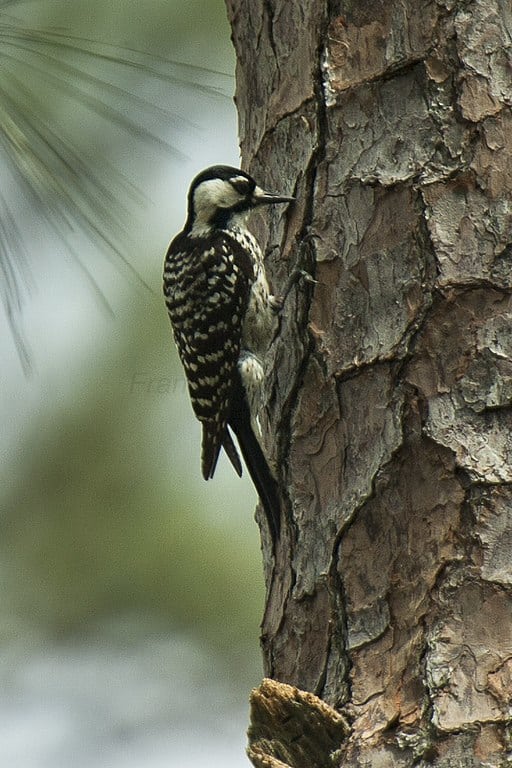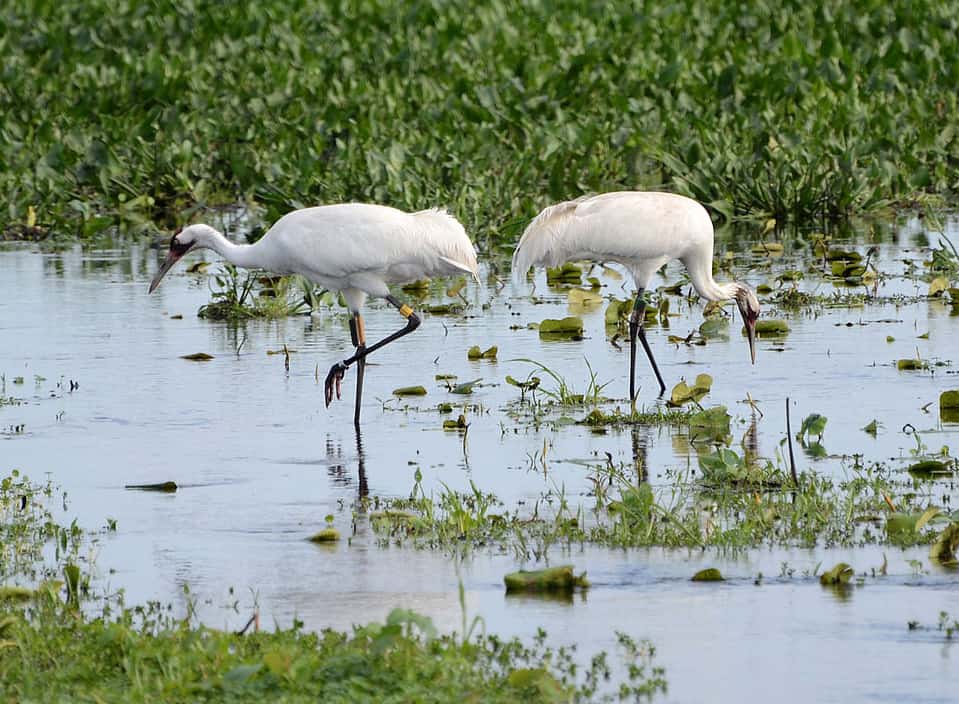Spring Birds of North Carolina (March, April, May)
Despite what the calendar says, birders know that spring really begins on March 1, not March 21. No matter if it’s still cold or the daffodils have not yet opened and the azalea buds are tightly furled. Spring does not rely on externals. Birders know when it’s spring because the millions of migratory birds that have spent the winter months in the South in a rather sedentary style are suddenly on the move again. Red-winged blackbirds come back to a mountain marsh they haven’t seen since November. Surf scoters appear on an inland lake. A flock of killdeer materializes in a pasture that held only a few cows the day before. Robins are everywhere, on lawns and ballfields and farm fields and golf courses. The purple finches that spent the winter eating your sunflower seed have disappeared. All over the avian world, surging hormones are compelling birds to sing and act and travel in ways they wouldn’t have dreamed of in January. No doubt about it: It’s spring.
Nor are migrant birds the only ones to feel these urges. Resident woodland species like titmice and chickadees begin practicing their mating songs, preparing to build nests and lay eggs with the first hint of warmth. Woodpeckers start excavating new breeding cavities. Bluebirds, cardinals, towhees, Carolina wrens, and many other backyard birds pair up and claim nesting sites early in the season, getting a jump on later arrivals. By the second week of March many nest boxes have already been spoken for, many territories already delineated. Spring is definitely here — and yet in many ways, it’s barely begun.
True, the various ducks and other water birds are moving around in March, making every lake a potential hotspot if only for a day or two. And true, the flocking birds are streaming in, not only robins but also killdeer, red-winged blackbirds, grackles, and such. And at dusk in many open fields the peent of male woodcock may be heard and their death-defying aerial displays witnessed by potential mates and astonished human observers alike. But what about small woodland species, the bright and beautiful warblers and vireos that all birders associate with spring? When will they return?
Soon. Even in early March some small colorful birds are only days away from most parts of the state. They begin filtering in a few species at a time. Blue-headed vireos are early returnees, and following close on their tails are Louisiana waterthrushes, which begin singing along mountain streams by the third week of March. Pine warblers, some of which spend their whole year in North Carolina, start journeying back to breeding grounds both near and far and might be found almost anywhere. Yellow-rumped warblers, winter visitors here, stream northward in large flocks on their way to the Adirondacks and points north.
Many sparrows that have spent the cold months here or farther south start moving north in late March. Among the hundreds of white-throated sparrows that may be encountered on a morning walk, a sharp-eyed birder will look for the less numerous species: vesper or swamp sparrows, fox sparrows, grasshopper sparrows, and sharptails. Depending on where you are in North Carolina, you might even hope for local rarities like LeConte’s or Henslow’s, clay-colored or lark sparrows. All are reported once in a while, but none is found easily. This, though, is the time to look.
Birders venturing to high-elevation sites along the Blue Ridge Parkway in early spring hope to hear at dusk the repetitive hoots of the little (six-inch) saw-whet owl, a northern species that breeds nowhere else in the state. Saw-whets are vocal from late March through May, but are often silent when it’s very windy — which is, unfortunately, much of the time at those altitudes.
Duck migration continues into April, and joining them in their watery habitats from April on are shorebirds of many kinds. The bulk of shorebird movement is along the coast, but many of these birds travel over the inland portions of the state and will occasionally come down to rest or feed, especially after a rainstorm.
By early April the ruby-throated hummingbirds are back, often returning to the same feeder they used the summer before. There is nothing more guilt-inducing for a homeowner who’s neglected to clean and fill the nectar feeder than to look out a window on April 2 to see a tired and hungry hummer hovering there, looking in vain for food. If you feed hummingbirds it’s a good idea, to get your feeders up by the end of March, just to be sure.
Summer resident birds continue to trickle in as April takes hold. A few black-and-white warblers, some black-throated greens, a prairie warbler or two, maybe a blue-gray gnatcatcher: The earliest arrivals are species that have spent the winter fairly close by in the Gulf states or Florida. (A few of these birds even remain in the southeast corner of North Carolina during the cold months.) It’s no surprise that they are usually the first of what are called neotropical migrants to come back.
By the same token, the first swallows to return are always the tree swallows, many of which winter along the North Carolina coast. They are followed by rough-winged swallows and purple martins, then finally, by barn swallows, which do not return completely until late April.
“Spring,” said a 19th-century naturalist who attempted to record its progress day by day, “is slow-paced and understandable for a while, but then without warning it roars in like a train, rushing at you, overwhelming you with its speed.” He had it right. For North Carolina birders noting new arrivals one by one, there suddenly comes a time somewhere in the second or third week of April when the task is no longer possible. The natural world seems to explode with color and sound. Woods and fields are alive with birds, the air filled with songs, and every day ripe with possibility. Spring has been present for weeks, but not until now has it fully—and wonderfully—arrived.
The next few weeks are the highlight of every birder’s year. There are so many places to go, so much to see, and so many surprises. There are spring bird counts and breeding bird surveys and endless trips into the field. No matter where you live in North Carolina you have a world of birding right outside your door. If you want to travel, a trip to the coast will bring dazzling numbers of gulls and terns and migrant shorebirds, whereas a journey to high-elevation mountain sites will reveal a bevy of northern birds mixed in with more expected southern ones, all in the space of a few hours.
And then, just as suddenly as it came, the rush is over and it’s quiet again. By late May northbound migrants are essentially gone and breeding species have settled into their nesting routines. The resident birds, those that began their nests in March, may be into a second breeding cycle by this time. The summer nesters, more lately arrived, are starting to incubate eggs. Spring, the time of promise, is over; summer’s fulfillment is about to begin.




